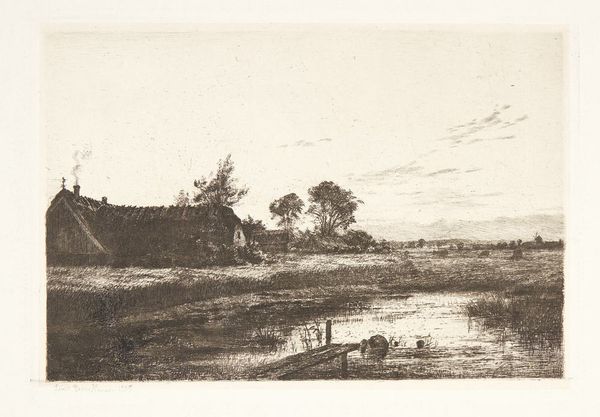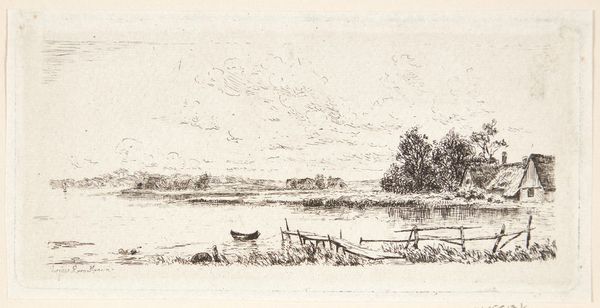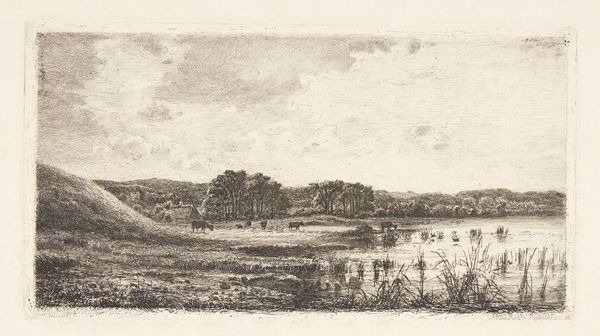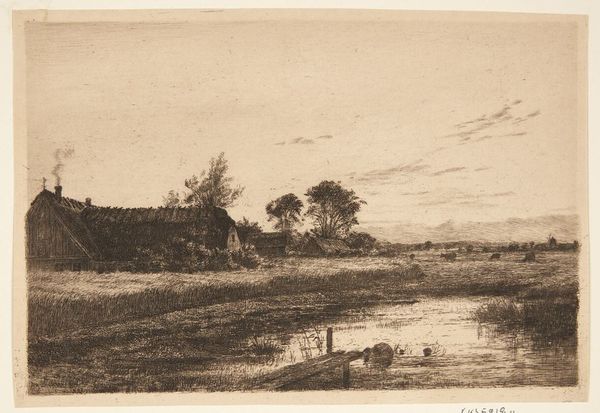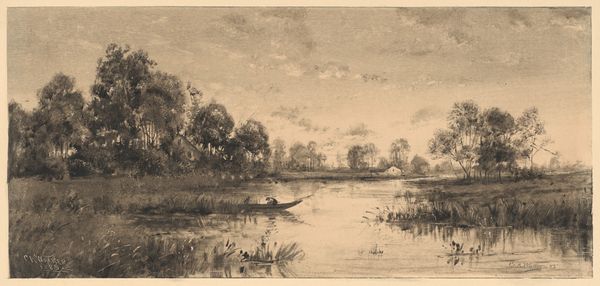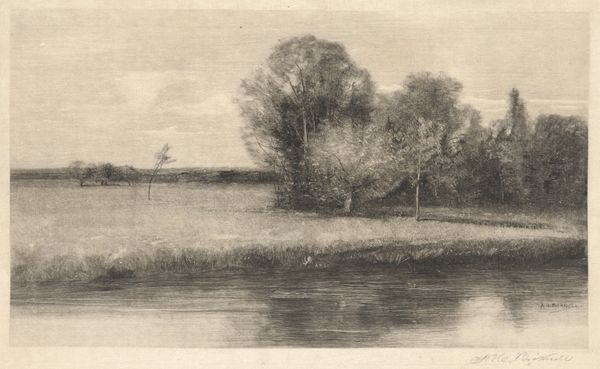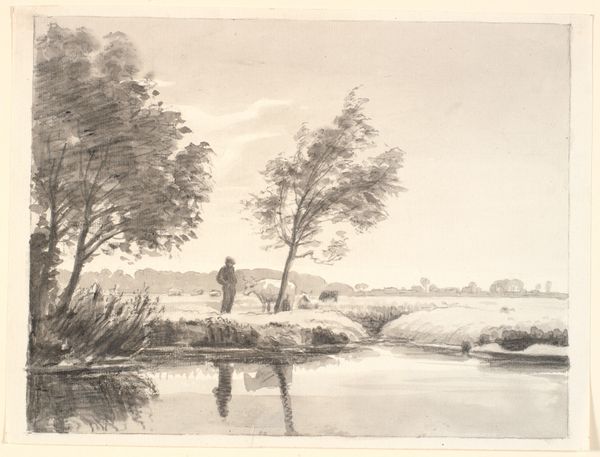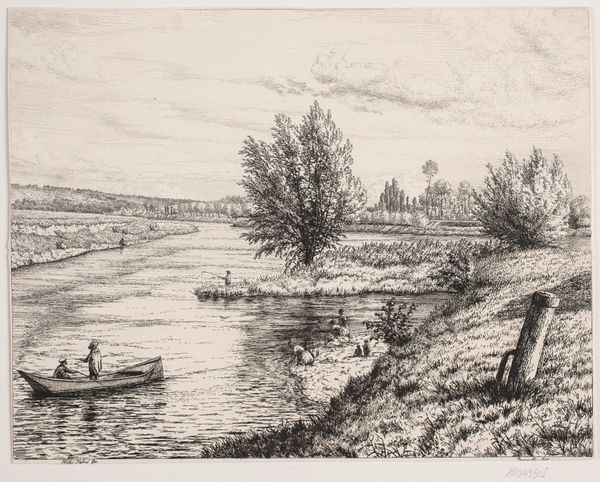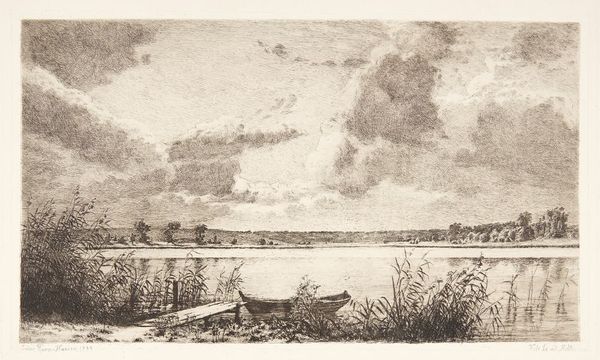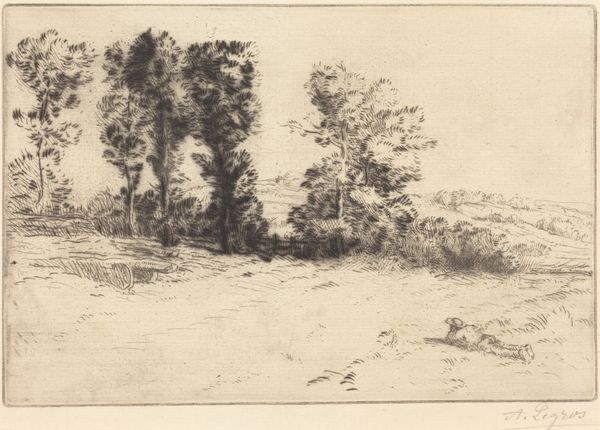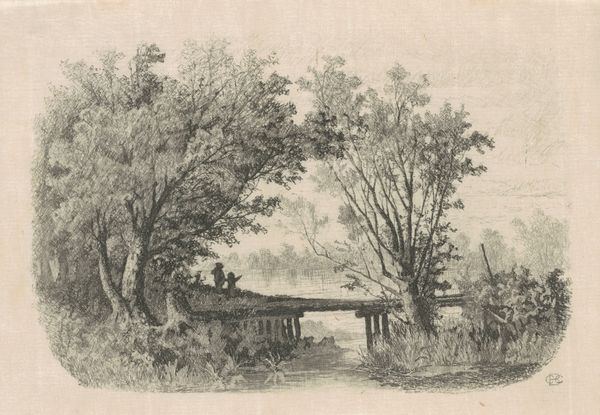
print, etching
#
pencil drawn
# print
#
etching
#
landscape
#
etching
#
pencil drawing
#
realism
Dimensions: 139 mm (height) x 200 mm (width) (plademål)
Curator: Look at the details in this etching, "Aften ved en sjællandsk bondegård," or "Evening at a Zealand Farmhouse," created in 1889 by Louise Ravn-Hansen. Editor: It strikes me as incredibly tranquil, almost melancholic. The heavy use of line work and shadow creates a hushed atmosphere. Curator: Ravn-Hansen was a prominent figure during a period of increasing urbanization, so her dedication to rural scenes gains meaning. This image evokes a longing for the simple life, a yearning tied to the complex socio-political tensions of late 19th-century Denmark. The work hints at the rising artistic movement advocating for the representation of the 'common man'. Editor: Notice how the reflection of the farmhouse is abstracted in the water; there’s this brilliant contrast between the precise linework of the buildings and the almost amorphous shapes mirrored below. I see a dialogue between reality and perception. Curator: Yes, there’s a commentary about the artist's interpretation of reality within that contrast. Considering the farm's placement—dominated by a heavy shadow on the left, contrasted by the distant, sunlit pastures on the right—I also consider whether this relates to then-prevalent cultural anxieties relating to economic disparity. Editor: That shadow does carry weight, both visually and metaphorically. But consider the perspective; the eye is drawn across the water toward that light, suggesting the farmhouse might be the thing anchored in place, while the land goes beyond. Curator: Your formalism provides an insightful counterpoint, a reminder of the artist's intent irrespective of our contextual interpretation. But to see beyond its aesthetic value, we have to explore these possible intersections. Editor: Agreed, and to divorce it from visual literacy also neglects something—a visual language that contributes significantly to the narrative it seems you would center. Curator: Ultimately, it’s a piece where technical artistry meets complex social commentary, urging us to appreciate its historical context as well as its etched beauty. Editor: It’s the juxtaposition of those precise lines and the diffused light that makes it stick in your mind—a seemingly simple landscape with unexpected depth.
Comments
No comments
Be the first to comment and join the conversation on the ultimate creative platform.
